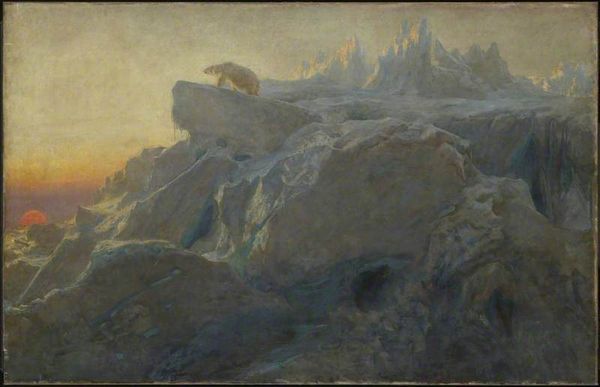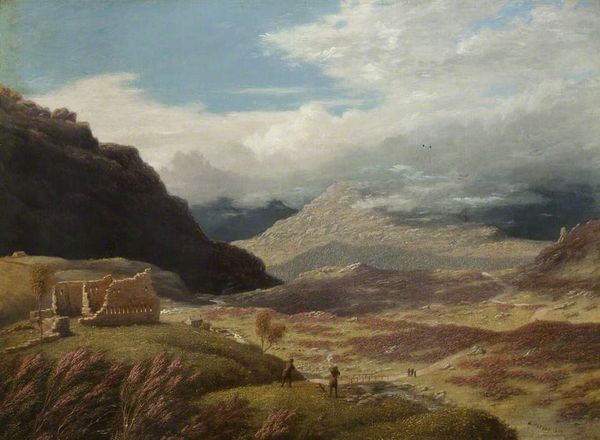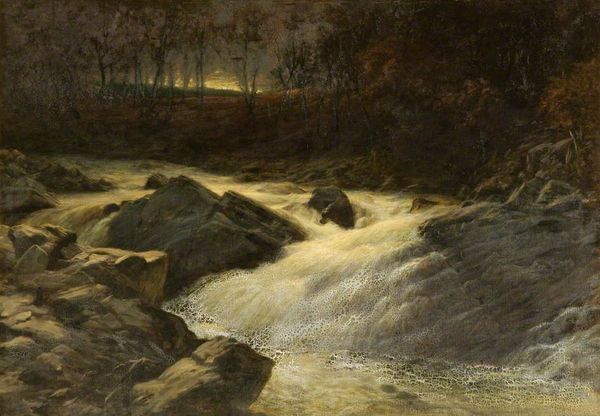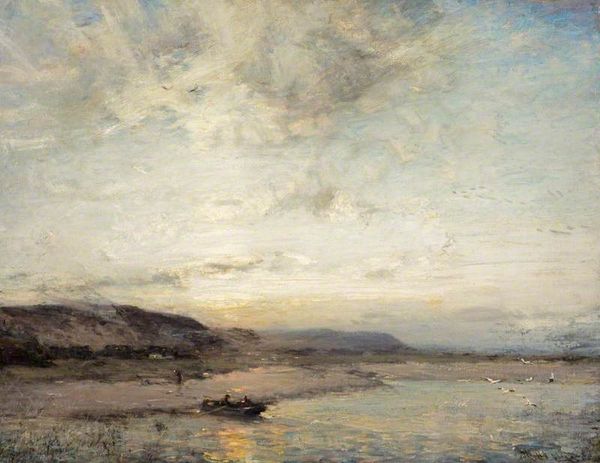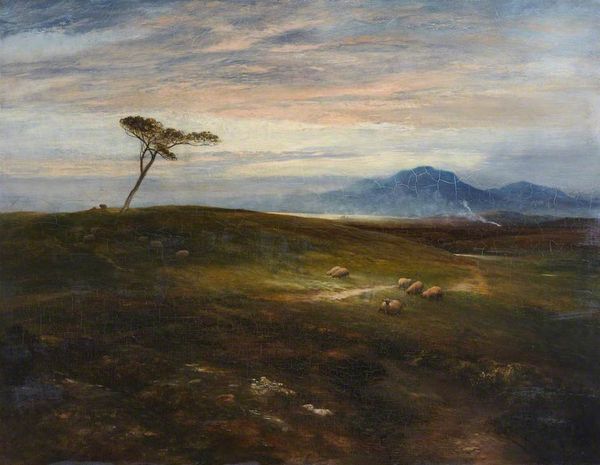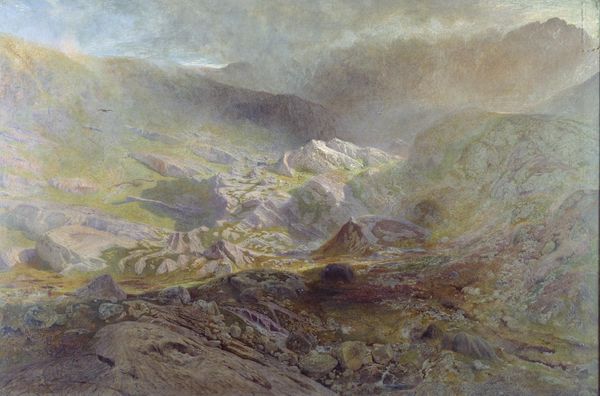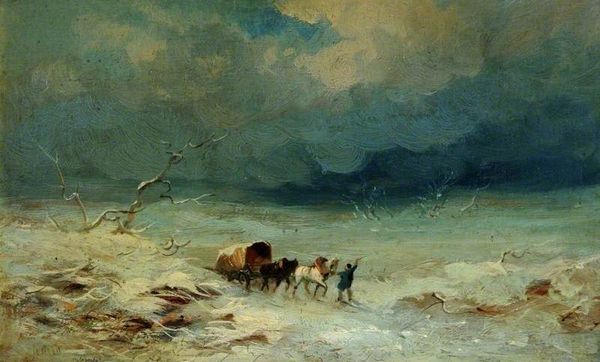
Copyright: Public domain
Curator: What a sight! Joseph Farquharson’s 1898 oil on canvas, “The Weary Waste of Snow, Forest of Birse, Aberdeenshire” just hums with the kind of melancholic beauty only a Scottish winter can inspire. Editor: Melancholic is spot-on. The overall composition leans into the gray-blue hues, yet that single water streak with its gleaming, yellowish cast piercing the center shifts the tone and creates spatial tensions. It draws you right into the scene. Curator: It’s the way the impasto mimics the texture of the snow itself that gets me. You can practically feel the chill seeping out of the canvas. It reminds me of trudging through endless fields as a kid. Remember that relentless crunch, crunch, crunch under your boots? Editor: Ah, the sensation of embodied cognition. And precisely that texturality lends the work to naturalism, even hyperrealism. Consider how each component, like those outcroppings emerging from the snowy field, defines the composition; the semiotic weight is evenly distributed. Curator: Distributed, yes, but there’s also a feeling of wild isolation. The lone sheep huddled against the elements as the black birds circle overhead adds this thread of anxiety that runs contrary to conventional prettiness of the landscape tradition. What do you make of the contrast? Editor: Contrast being, of course, essential. See how the artist uses it to create a compositional balance that enhances the structural integrity of the work as a totality; there's also great Romanticism here. The sublimity of nature—as that lone sheep reminds—but simultaneously a commentary on vulnerability in the face of nature's power. Curator: Precisely! I love that dance, how he evokes these deep personal feelings without turning overly sentimental or heavy handed. You know, capturing raw honesty is harder than capturing pure aesthetic "beauty," as if the two things can be so neatly separated to begin with. Editor: Well, and consider that aesthetic and emotion aren't mutually exclusive; they can achieve synergy that exceeds their parts. Looking closely, it’s that band of orange on the horizon line counteracting the harsh conditions of the tonal values; Farquharson generates a liminal space as an alternative perspective on mimesis. Curator: Mimesis is just not a cold objective copying—that’s so vital to remember. Ultimately, it reveals ourselves—all our complicated aches and desires. I leave today filled with a strange kind of serene hope after confronting its dark depths. Editor: The intersection of aesthetics and vulnerability here remains powerful and evocative, a subtle challenge to simplistic landscape interpretations and to notions of conventional form.
Comments
No comments
Be the first to comment and join the conversation on the ultimate creative platform.



